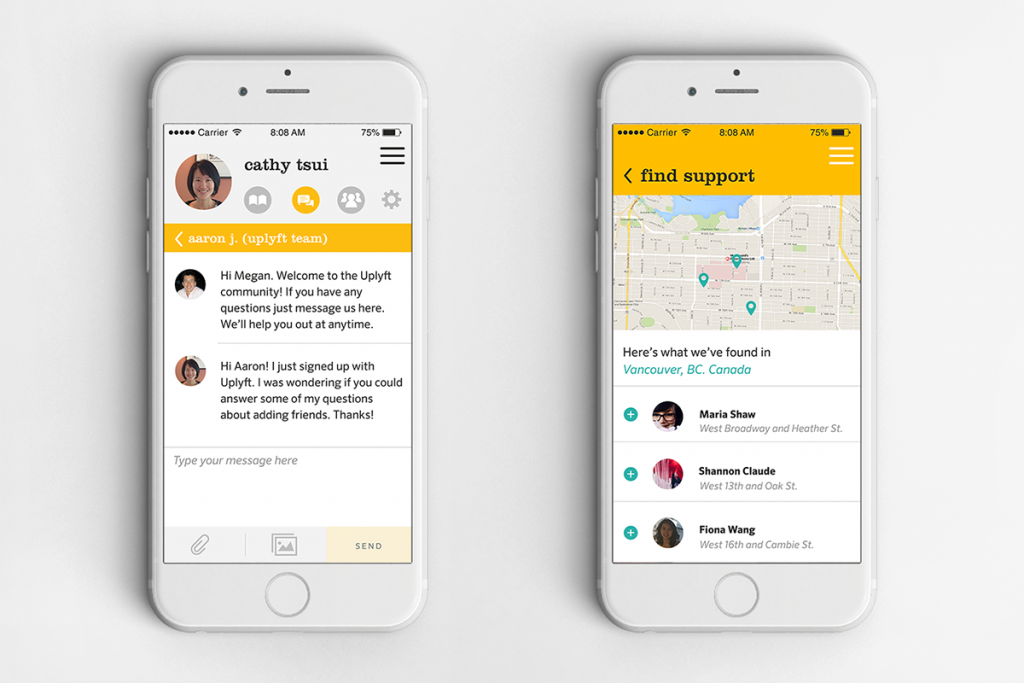I was born with primary lymphedema (PL)—a rare, congenital, progressive and chronic swelling affecting primarily the limbs, leading to distortion in size, shape and even function, in my left arm and intestines. PL is caused by a failure in the lymphatic system and contributes to an individual’s physical, social, emotional, and psychological distress. Furthermore, without a normally functioning lymph system, non-reabsorbed fluid, protein, cells, and fat remain in the system and can cause death within 24 hours [2]. Medical care tends to place emphasis on the physiological affected limb while little attention is placed on improving one’s social, emotional, and psychological well-being [2].
As a young adult who has grown up with this condition, I have found that even with the support of my medical care team and close friends and family, my condition has strongly affected me emotionally, psychologically and socially—especially in relation to how I perceive and identify myself in regards to my body image. Secondary and primary qualitative research revealed that many individuals experience and cope with social stigma, which has been key in the construction of their narrative identity [1]. They are “left untreated, unsupported, and suffering unnecessary psychological distress” as the swelling is seen as a constant reminder that there is something wrong with them [2]. In addition, many feel too apprehensive to talk about their stressors and seek acceptance, thus resulting in feelings of isolation [3].
Shifting to Brighter Narratives
PL is considered a rare condition with affected individuals scattered across the globe; these individuals have voiced the need to share their stories with others with the same condition. My undergraduate thesis project, Uplyft—the name deriving from the benefits of elevating the affected limbs and the spirits of those with PL—has become an opportunity to respond to this problem space. Uplyft is an online community for young adults between the ages of 20-35 diagnosed with PL, where they can share personal stories, build online and local communities and connections, and discover available support groups. The aim of this community is to shift its members’ self-perceptions through storytelling.
Strategies Happening Today
Current approaches that strive to provide a sense of community for these individuals are social networking platforms such as Facebook groups, which act primarily as spaces to share knowledge about maintaining physical health. There are also online forums where users read and post questions and answers about lymphedema topics. However, young adults who are ready to speak up about their stories feel Secluded. There are few spaces that respond to their age group where they can share concerns relevant to their experiences (Primary Participant 1, personal interview, November 2, 2014). In addition, most of the discussion topics are about secondary lymphedema because most of the active members are affected by this condition (Primary Participant 1, personal interview, November 2, 2014). Blogs are the most effective precedence thus far, as they serve as online diaries for users to post their daily experiences while other users can get a more intimate understanding of their stories by reading, commenting, sharing and favouriting posts.
Design Opportunity
Providing an online space for connection emerged as a clear design opportunity. After exploring a variety of solutions, I focused on the design of a responsive website where these individuals can share personal stories, build connections through online and local communities, and discover available support groups at any point of their day. I have established three design mandates that must be present in the final outcome in order to successfully shift the primary user’s perceptions about their body image and appearance:
1. Reduce feelings of isolation by generating a sense of community
2. Provide accessibility to those in remote areas
3. Educate the general public about PL
Design Implementation
Uplyft’s home screen mirrors the interconnected lymph system by joining the isolated worlds of individuals into an immersive connected visual galaxy. Within this space, by panning, zooming and tapping, users are able to explore other peoples’ stories and hobbies, and also see who they’re following or are followed by. Users can share their written stories and related media content with a customized user group or open them to the public. They’re also able to directly message each other and members of the Uplyft staff, add users to their following list, and locate available support groups to generate a stronger sense of community. By providing a community space where young individuals with PL can share their personal stories and generate dialogue, Uplyft is an opportunity to shift their self-perceptions of their body image and appearance.


References
- [1] Conrad, P., and Barker K. K. The social construction of illness: Key insights and policy implications. Journal of health and social behavior, 51 (1), 2010. S67–79.
- [2] Harding, J. E. The experiences of young people with primary lymphoedema. British journal of community nursing 17, Sup6, 2012. S4-S11. 14 Oct. 2014. http://connection.ebscohost.com/c/articles/83621556/experiences-young-people-primary-lymphoedema.
- [3] Williams, A. F., Moffatt, C. J., and Franks, P. J. A phenomenological study of the lived experiences of people with lymphoedema. International journal of palliative nursing, 10 (6), 2004. 279–86. October 11 2014. http://www.ncbi.nlm.nih.gov/pubmed/15284623.
